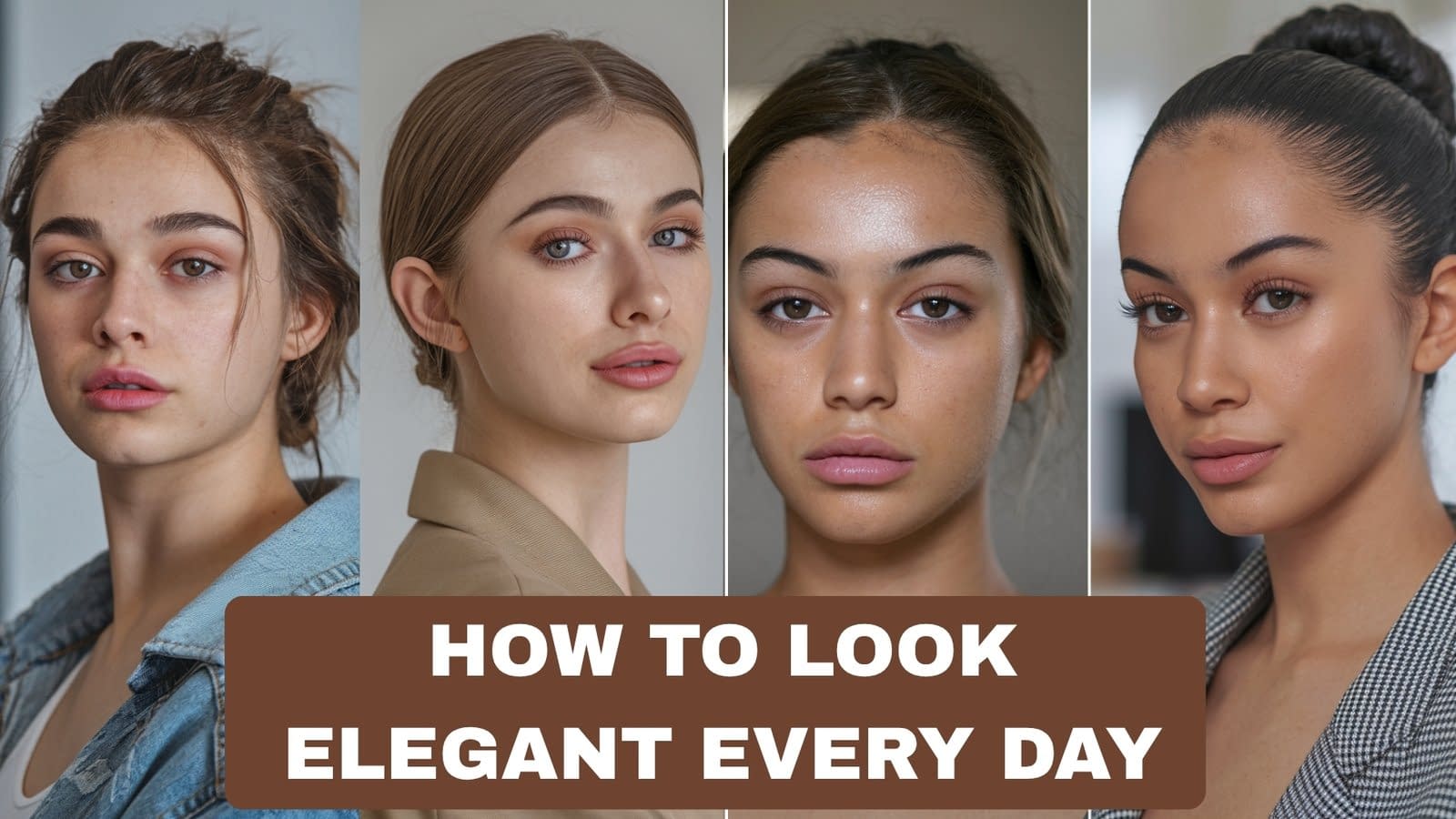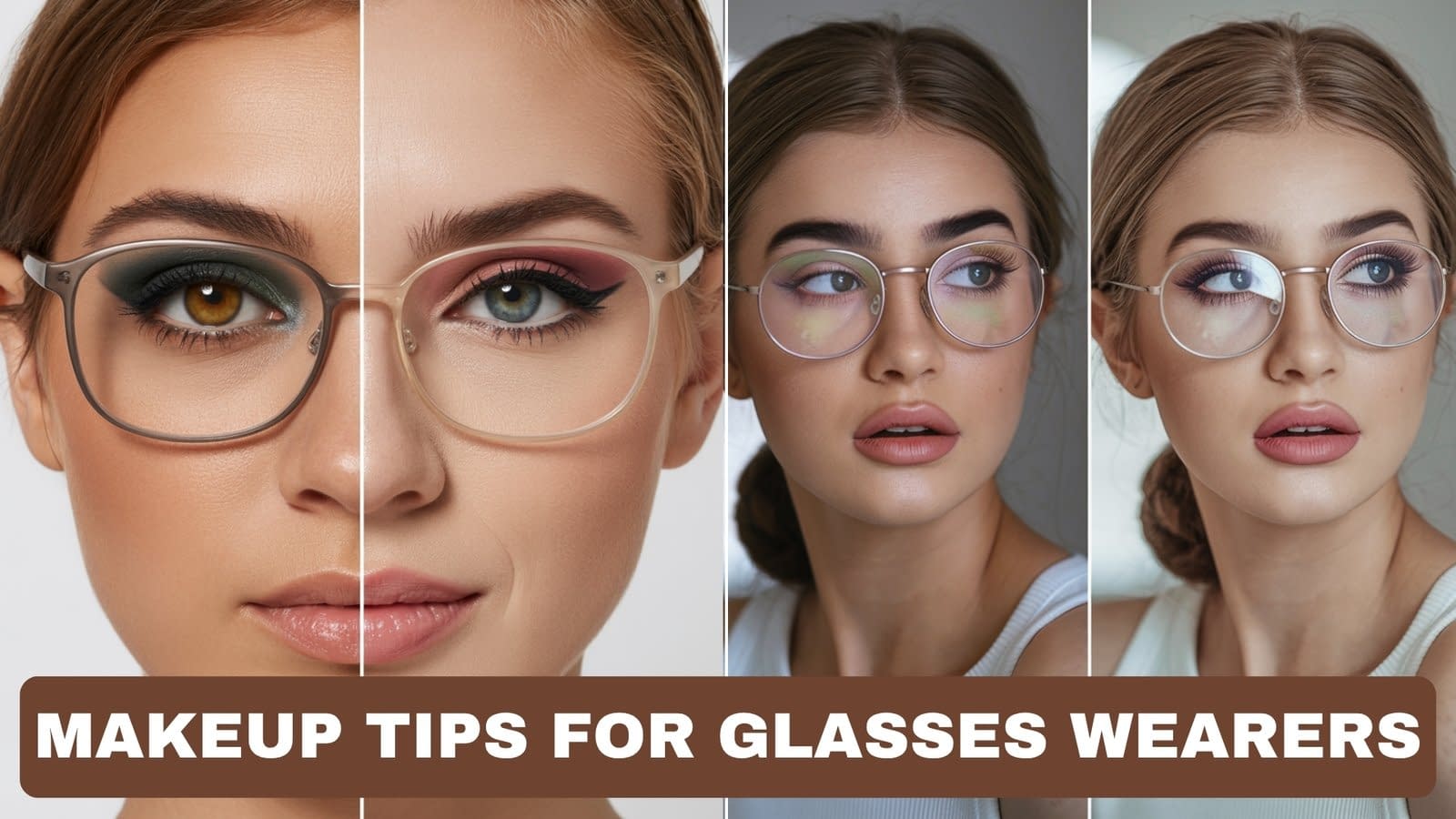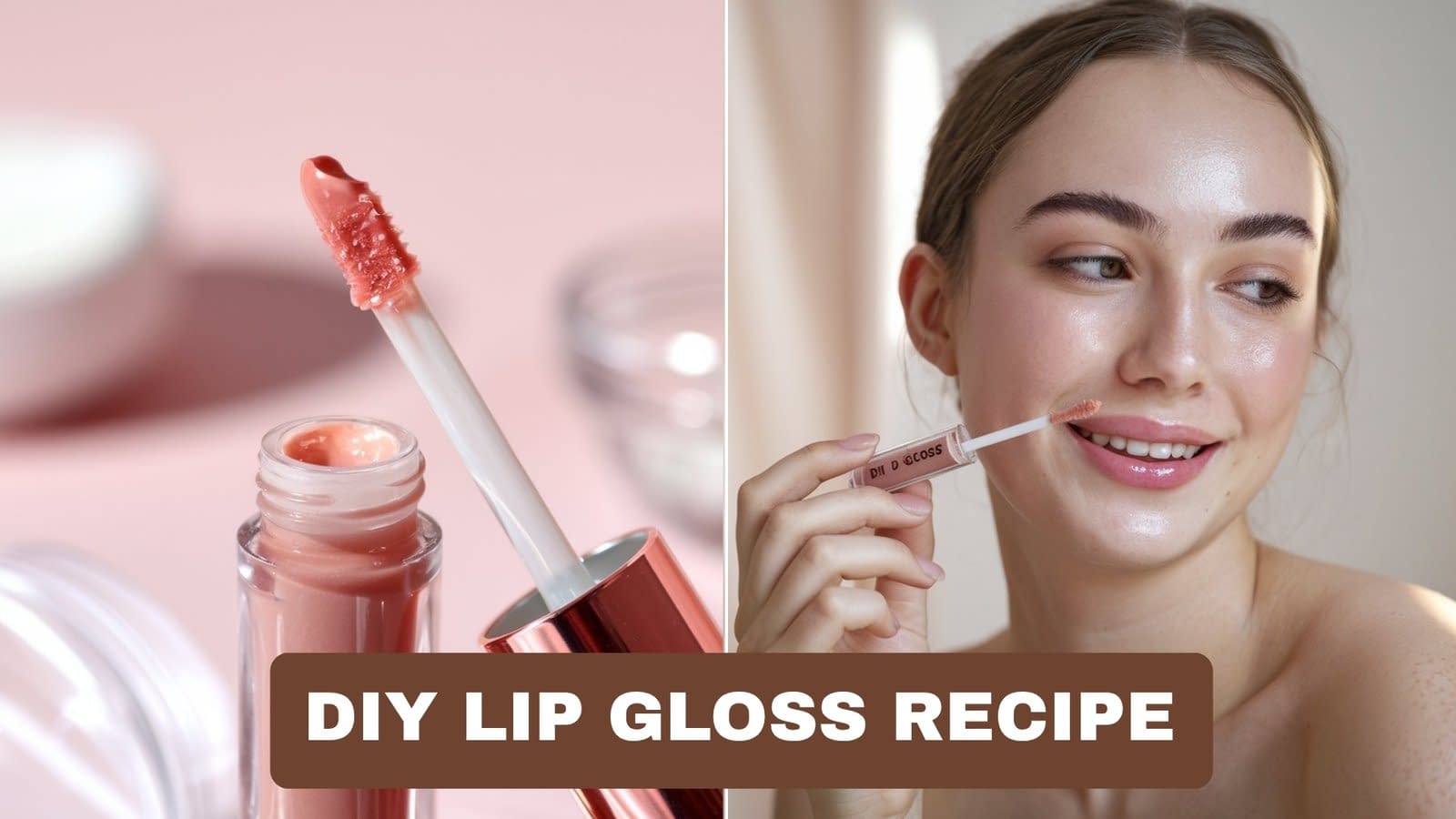Want your makeup to survive coffee, commutes, meetings, and a dinner out — without looking cakey, cracked, or faded? It’s not magic. It’s layering smart, prepping well, picking the right formulas, and using a few pro techniques most people skip. Read the whole thing or jump to the sections you need — below I give easy step-by-step methods, product/ingredient cues (so you can shop smarter), and seasonal tips so your look holds up whether it’s 95°F and humid or -10°C and dry.
Why Makeup Fades: Understanding the Causes

Before we fix it, know why makeup fails. Once you recognize the culprits, the solutions become obvious.
Main causes:
- Oil & sweat: natural skin oils and sweat break down foundation, move pigments, and dissolve adhesives in long-wear formulas.
- Friction: touching your face, rubbing your mask, clothing/seatbelt friction — these wipe pigment away.
- Poor base: applying makeup to dirt, flakes, or an overly oily surface prevents adhesion.
- Wrong formulas: some foundations/powders aren’t meant to be long-wear; water-based products tend to oxidize or migrate faster than film-forming, silicone-based formulas.
- Environmental factors: heat, humidity, and cold can all change how products set and wear.
- Application errors: too much product, not enough blending, or not setting cream products properly causes creasing or patchy fading.
Fix the root causes: control oil/sweat where you can, start with a clean hydrated but not slick canvas, use long-wear formulas and thin layers, and lock everything in with powders and sprays.
Start with a Clean, Well-Prepared Canvas
Good makeup starts with skin preparation. A 3–5 minute prep routine gives the biggest payoff.
Step-by-step prep (AM routine for long wear)
- Cleanse: use a gentle cleanser to remove oils and sweat. For oily skin, choose a gel or foaming cleanser; for dry, a cream cleanser. Pat dry.
- Tone (optional): if you use a toner, pick a hydrating, alcohol-free formula. It balances pH and removes any leftover residue.
- Exfoliate 1–3× weekly: not daily. Chemical exfoliation (low % AHA or BHA) once or twice a week removes dead skin so makeup doesn’t cling to flakes. Don’t exfoliate the morning you need ultra-natural finish unless your skin tolerates it.
- Hydrate: apply a light humectant serum (glycerin or hyaluronic acid) on damp skin — this keeps skin plump but not oily.
- Moisturize: choose a moisturizer suited to your skin type. Oily skin: light gel or oil-free lotion. Dry skin: richer cream. Wait 30–60 seconds to let it sink in; if skin still feels slick, blot lightly with a tissue.
- Eye cream (optional): tap a small amount around eyes to hydrate and allow concealer to sit smoothly.
- Prime (see next section): apply the right primer for your skin and the areas you want to control (T-zone, eyelids, lips).
Tips:
- For combination/oily skin, use a mattifying product only where needed. Don’t strip skin; dehydrated skin makes products cling weirdly.
- Let each thin layer sink in — heavy “globs” don’t set well and will slide.
Primers: Your Secret Weapon for Long-Lasting Makeup

Primers create a stable surface and help makeup adhere. Pick the primer by function, not packaging.
Primer types & when to use them
- Silicone-based primers (dimethicone, cyclopentasiloxane): create a smooth, blurring film and are excellent under foundation for longevity. Great for normal-to-oily skin and to fill fine pores/texture.
- Water-based/gel primers: lighter feel; good if you dislike silicone. Use under light coverage or for dry skin that needs hydration.
- Mattifying primers: contain oil-absorbing powders or polymers — use on T-zone and for oily skin.
- Hydrating primers: contain glycerin, hyaluronic acid — layer on cheeks for dry skin.
- Eyeshadow primers/creams: essential for lids to prevent creasing and creasing; also intensify pigment.
- Lip primer/base: clear balm or a very thin layer of lightweight concealer helps longwear lip color adhere.
How to apply primer (step-by-step)
- Use a pea to dime-size amount. Less is more. Dab product on forehead, nose, chin, and cheeks.
- Press and smooth — don’t rub aggressively. For silicone primers, a light pressing motion warms the primer to spread thinly.
- Target trouble areas: a small amount down the nose/center of forehead for oil control; lids and inner corner for eyeshadow.
- Wait ~30 seconds for primer to set before applying foundation — film-formers bond best when slightly tacky, not wet.
Pro tip: You can mix a drop of primer with your foundation for extra staying power and smoother finish.
Foundation Tips That Stay Put All Day
Foundation is where longevity is most visible. The formula, technique, and placement matter.
Formula selection
- Look for “long-wear,” “24h,” or “transfer-resistant” in descriptions. Ingredients that help durability include silicones and certain film-formers (VP/VA copolymers) — not scary, they just help makeup adhere.
- Powder foundations and stick foundations wear well on oily skin.
- For dry skin, pick a long-wear hydrating foundation (look for hyaluronic acid) or a long-wear cream formula and set strategically.
- Tinted moisturizers are lighter and less long-wear; only use if you plan minimal activity.
Application tools & technique (step-by-step)
- Start small. Pump a pea-sized amount; you can build coverage — thin layers dry and stick better.
- Apply where needed: center of face first (where oil/sweat and discoloration are most visible), then blend outward.
- Use the right tool:
- Damp sponge (beauty blender) — excellent for bounce-in and sheered, long-wear finish (pressing action embeds product into skin).
- Dense buffing brush — gives fuller coverage and works great with liquid/cream foundations for longevity.
- Fingertips — great for sheer coverage and warmth, but use sparingly.
- Buff & press: after spreading product, press and buff to meld product into skin (pressing forces product into primer and minimizes surface film that will slide).
- Blend at edges to prevent obvious lines.
- Layer concealer only where needed: pat concealer with a small sponge or brush and set.
Setting foundation
- Immediately set oily areas with a thin dusting of translucent powder using a dense brush or puff — press, don’t sweep on T-zone. Avoid over-powdering dry areas.
- For extra hold, use a thin veil of powder over the whole face (light and well-blended). Micro-silica or silica-based powders grip makeup without heavy white cast.
Foundation longevity checklist
- Thin layers, proper primer, pressing technique, set oily areas with powder, finish with setting spray.
Set It Right: Powders, Setting Sprays, and Techniques
Setting is the lock that holds everything. Use a combination for best results.
Powder: how & where
- Translucent loose powder: best for oil control and a weightless set. Apply with a flat puff or dense brush. Use pressing/boning motion to set concealer and T-zone.
- Pressed powder: good for touch-ups on the go. Sweep lightly with a large fluffy brush when you need to diffuse shine.
- Color matching: avoid heavy white or chalky powders — silica + very finely milled pigments do the job.
Setting spray: which types and how to use
- Mist first: choose a “long-wear” setting spray (look for terms like “lock,” “long-lasting,” “transfer-resistant”). Ingredients often include film-forming polymers that help makeup adhere.
- How to apply: hold spray ~8–12 inches from face. Do 3–4 short bursts in an X & T pattern (forehead → chin → sides). Let dry naturally.
- Layering technique: dust a fine veil of powder to set, then finish with a spritz of setting spray to fuse powder and liquids — the spray dissolves the powder slightly and locks everything together, preventing a cakey look.
Pro tip: For oily skin, try the “powder-spray” method — press a translucent powder into t-zone and under eyes, then do a light setting spray to seal.
Eye Makeup That Won’t Smudge or Crease
Eye area oils and movement make this a challenge — but the right base and technique keep lids perfect.
Step-by-step eye technique
- Prime the lids: a dedicated eyeshadow primer or a thin layer of concealer set with a bit of translucent powder. This creates a tacky base for pigment to cling to.
- Use cream base for color pop: For long-wear, apply a thin layer of cream shadow or cream eyeshadow stick as a base (neutral shade). Tap with a finger or sponge tip.
- Powder eyeshadow over cream base: pat powder eyeshadow on top with a flat brush for increased pigment and longevity. Pressing motion > sweeping.
- Eyeliner: use long-wear or waterproof eyeliner pencils, gel liners set with a matching powder shadow to lock, or use waterproof liquid liners for the highest smudge resistance. For tightlining, use a waterproof pencil and set lightly with powder to avoid transfer.
- Mascara: waterproof mascaras resist humidity and tears. If you find waterproof formulas too stiff, choose a long-wear “smudge-proof” formula. Apply 1–2 coats, let dry, and avoid touching lashes.
- Set the lower lashline minimally: set liner on lower lashline with tiny dabs of powder shadow to avoid smudging without dragging heavy product.
- Seal with setting spray: one light mist over the face, including eyes, helps everything stay in place.
Extra tips:
- For oily lids, use a mattifying primer and press a thin layer of powder on the lid before shadow.
- Avoid heavy cream shadows on lids if you’re extremely oily — they’ll migrate. Use powder over primer instead.
Lipstick That Stays Put Through Meals and Drinks

Long-wear lips are about prep, layering, and choosing the right formula.
Step-by-step long-wear lip method
- Exfoliate lips: buff gently with a sugar scrub or soft toothbrush and rinse. Pat dry.
- Hydrate then blot: apply a thin lip balm for ~5 minutes, then blot off excess — you want hydrated but not slippery lips.
- Prime or base: dab a touch of foundation or concealer over lips to neutralize color for truer lipstick tone and better adhesion.
- Lip liner: outline and fill lips with a lip liner in same or slightly darker shade — filling gives a long-wear base.
- Apply lipstick (layering):
- First coat: apply a thin layer from bullet or brush.
- Blot & set: blot with tissue, dust lightly with translucent powder (place tissue over lips and powder through it to avoid matte look).
- Second coat: apply a second thin layer for intensity.
- Use long-wear formulas: stain-based liquid lipsticks, transfer-resistant formulas, and hybrid long-wear lipsticks last best.
- Seal: optionally finish with a dab of clear gloss in the center only (for shine) — beware gloss reduces transfer resistance.
Food/drink tips
- For meals, press a napkin lightly over lips before drinking, or use a straw to avoid heavy transfer.
- If you want to touch up, carry a matching liner or a thin stick for quick re-draw and blot step.
Pro tip: For a natural look that lasts, use tinted lip balm + liner filling — it’s forgiving and long-lasting.
Blush and Bronzer That Last All Day

Creams then powders are the secret — layering for longevity and natural finish.
Step-by-step for cheeks
- Cream base first: apply a thin layer of cream blush/bronzer to the high plane of the cheek where you want color. Use fingertips for warmth and blending.
- Lightly set with powder: using a small fluffy brush, press a matching powder blush/bronzer on top of the cream to set it. This creates a long-wear hybrid that resists fading.
- Placement: bronzer on the hollows/sides of face; blush on apples/blend upward for lift.
- For oily skin: start with powder; for dry skin, cream first. Always set with a light mist of setting spray to meld layers.
Tips:
- Use matte bronzer for longevity; shimmery bronzers tend to migrate with oil.
- Build in thin layers; heavy slabs of powder look flat and fall apart midday.
Touch-Up Tips Without Ruining Your Look

Light touch-ups keep a look fresh — do them strategically.
On-the-go touch-up kit essentials
- Blotting papers (never rub)
- Small puff or pressed powder compact
- Lip liner or lipstick for quick recharge
- Mini setting spray (travel size)
- Cotton swab or Q-tip for tiny fixes
Touch-up steps
- Blot, don’t powder where possible. Use blotting paper to remove oil — pressing removes shine without adding product. If you need to powder, press a small amount with a puff.
- Refresh eyes with powder, not more product. Tap a tiny amount of powder shadow on lid if oils have broken color.
- Revive foundation: for dry areas, a few drops of facial mist and a very light press with sponge can help re-mate product. For oily T-zones, blot and a light touch of powder.
- Lips: re-line and apply 1 thin swipe of product, blot and set. Quick and fast—avoid layering thick coatings.
Pro tip: Carry the same shades you used to avoid color mismatch.
Avoid Common Mistakes That Make Makeup Fade
These small errors cause huge wear problems.
Mistake → fix
- Applying makeup on dirty/oily skin → cleanse and use primer.
- Using too much product → thin layers set better and last longer.
- Rubbing skin → blot gently and use setting spray.
- Layering incompatible formulas (very thick cream + slippery oil) → match textures and always set creams with powder.
- Not setting concealer under eyes → set lightly with a pressing motion to avoid creasing.
- Skipping touch-ups → blotting is quick and prevents sliding pigment.
Remember: thinner → better. Build up, don’t pile on.
Seasonal Makeup Tips: Summer, Winter, and Humid Climates
Weather changes the rules. Adapt your products and techniques for best wear.
Summer & Humid climate
- Use oil-control primer focused on T-zone.
- Switch to water-resistant or lightweight long-wear formulas. Matte foundations and powder/compact foundations shine here.
- Avoid heavy creams; prefer gel or powder bronzers/blushes.
- Set with a mattifying setting spray or one made for humidity (look for “humidity-resistant”).
- Blotting papers are your best friend — and carry a travel setting spray.
Winter & Dry climate
- Hydration first: use a richer moisturizer or hydrating primer on cheeks, but keep T-zone minimal.
- Use cream blush/bronzer for a natural glow and layer a light powder on top to set.
- Avoid over-powdering — cold air makes powders look dry and flaky.
- Use a hydrating setting spray to meld powders to skin while still locking them in.
Cold + windy days
- Wear scarf to protect makeup from friction; dab setting spray before heading out.
Air-conditioned indoor climates
- Use light oil-controlling products if AC strains skin barrier (some people get oily from dehydration). Drink water and keep a hydrating mist handy.
Expert Tricks to Make Your Makeup Last from Morning to Night
These are pro techniques MUA’s use repeatedly.
- Layer like a pro: cream → powder → cream? Actually: hydration → primer → thin liquid foundation → press-set with powder → spray to fuse → touch later only if needed.
- Set in stages: set concealer right away, set foundation lightly, set full face with setting spray. This staged approach stabilizes different textures.
- Use microdots of concealer for spot correction instead of rubbing powder repeatedly. Pat with a small sponge and set.
- Seal eyeshadow with a tiny dab of mixing medium (or setting spray on a brush) when applying glitter or loose pigments so they adhere more strongly.
- Layer lip products: pencil base + stain + thin lipstick + blot + powder + top coat — this multi-step builds transfer-resistant color.
- Apply mascara in a Z-motion (zigzag upward) for even coat and less clumping; let dry fully before touching.
- Use professional setting sprays with film-forming polymers for events — they add a protective layer that resists smudging and fading.
- For long travel days, anchor the makeup with a thin veil of powder, and carry a small kit with blotting paper, powder puff, and lipstick.
- Avoid overusing SPF mineral powders on face if you want totally matte finish—they can be drying; instead use chemical SPF or a sunscreen under makeup and finish with setting spray.
Final Words
Making makeup last all day is mostly about smart preparation, choosing the right formulas, layering thinly, and locking everything in. Start with clean, hydrated skin; prime according to your needs; apply thin, well-blended layers of foundation and concealer; set with powder where oil threatens; and finish with a quality setting spray. For eyes and lips, use primers, cream + powder layering, and long-wear specific formulas. In hot or humid weather, target oil control and carry blotting papers; in cold/dry conditions, prioritize hydration and avoid over-powdering.
Do this routine consistently and your makeup will go from “good for an hour” to reliable for the full day — saving you time, stress, and touch-ups.








